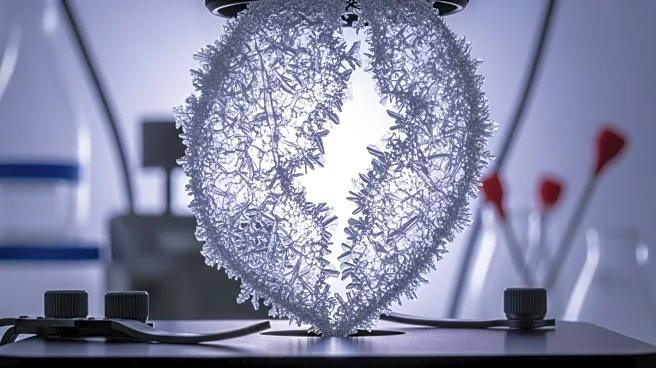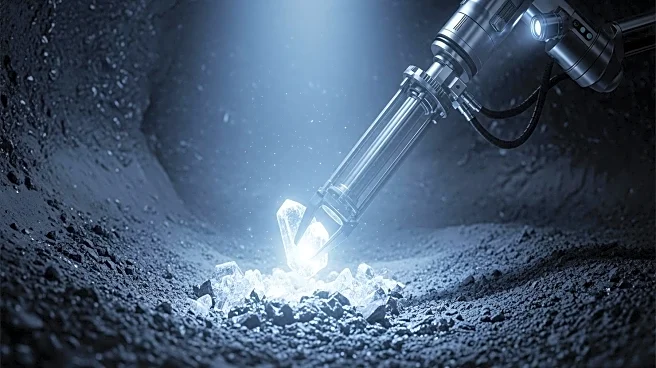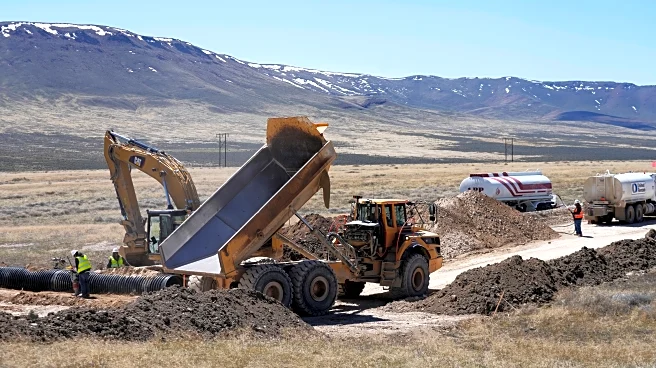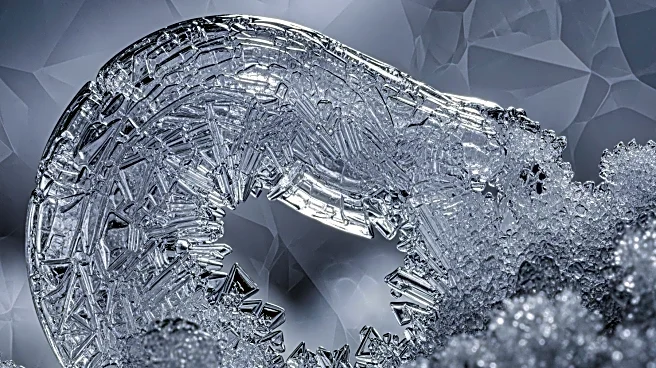What is the story about?
What's Happening?
Researchers at the Department of Energy's Pacific Northwest National Laboratory (PNNL) have made a groundbreaking discovery regarding the flexibility and malleability of ice. Through the first-ever molecular-resolution observations of nanoscale ice samples, scientists have found that ice, despite forming in a hexagonal lattice, is surprisingly adaptable. This flexibility allows ice to accommodate structural imperfections and trapped gas bubbles without fracturing. The study, published in Nature Communications, utilized a novel technique called cryogenic liquid-cell transmission electron microscopy to observe the freezing process of water sandwiched between thin carbon membranes. This method enabled the team to capture images with atomic-level detail, revealing the behavior of gas bubbles within the ice lattice.
Why It's Important?
This discovery has significant implications across various fields. Understanding the flexibility of ice can enhance the preservation of cryogenic biological tissue samples and improve safety forecasts for aviation and vehicles. Additionally, it provides insights into glacier dynamics, as the presence of air bubbles in ice can accelerate melting. The research also contributes to a deeper understanding of ice crystallization and melting behaviors, which are crucial for environmental and climate studies. The ability of ice to tolerate defects without compromising its structure is unique among solids and supports life on Earth, particularly in marine environments.
What's Next?
Future research will focus on studying the melting process and exploring more complex samples, such as water with dissolved materials. The findings could lead to advancements in various applications, including the development of better preservation techniques for biological samples and improved safety measures for transportation. Collaboration with other scientific institutions will continue to refine the molecular dynamics models and further explore the unique properties of ice.
Beyond the Headlines
The study highlights the potential for new technological applications by leveraging the unique properties of ice. The adaptability of ice could inspire innovations in materials science, particularly in developing materials that can withstand structural imperfections. Additionally, the research underscores the importance of interdisciplinary collaboration, combining experimental observations with machine learning models to enhance our understanding of natural phenomena.
AI Generated Content
Do you find this article useful?














